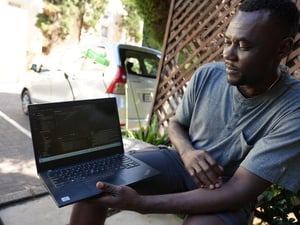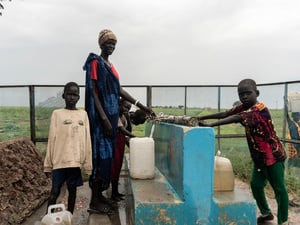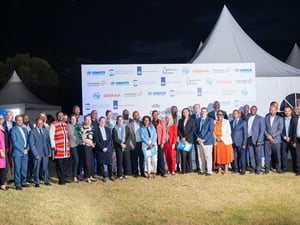From barriers to bridges: Empowering refugee education in West and Central Africa
From barriers to bridges: Empowering refugee education in West and Central Africa

Hali attending a course in class.
Conflict, displacement, and limited resources have made education a daunting challenge for countless children throughout West and Central Africa, where entire communities are uprooted by crisis. UNHCR, the UN Refugee Agency, working with local and international partners, has been striving to overcome these barriers and ensure that every child has a chance to learn and heal.
Hali is sixteen years old, deaf and mute, and originally from Mali. Her family fled conflict and sought refuge in Niger, settling in the Mangaizé camp, about 100 kilometers from Niamey. Like many displaced children, she faced added obstacles because of her disability: while most refugee camps struggle with limited educational infrastructure, Hali needed specialized support that was unavailable locally.
In 2014, UNHCR’s Age, Gender, and Diversity (AGD) assessments revealed the extent of her needs. Collaborating with government authorities, including the Departmental Directorate for Child Protection in Ouallam and the Ministry for the Promotion of Women and Child Protection, UNHCR launched a coordinated plan to help Hali. It involved securing her relocation to Niamey, placing her with a supportive host family, and enrolling her at the Hassane Bana Ba School for the Deaf and Hard of Hearing. Since her enrollment, Hali receives cash assistance from UNHCR, which helps cover school fees, transportation, feeding, and supplies. Additionally, UNHCR provides her with medical assistance to address her specific health needs.
“I dream of becoming a nurse,” Hali conveys through sign language. “I want to help others and break down barriers that children with disabilities face in accessing education opportunities.” Today, she is thriving in lower secondary school, a testament to the transformative impact of specialized support and inclusive learning.
Empowering communities through youth-led healing programme in the Central African Republic
In the Central African Republic, many Sudanese refugees have also experienced the pain of displacement and the trauma of conflict. In remote areas like Birao, schools serve not only as classrooms but as safe havens and spaces for healing. Recognizing that trauma hinders learning, UNHCR has integrated mental health and psychosocial support (MHPSS) into its emergency education response. Supported by Education Cannot Wait and implemented with organizations like INTERSOS, this initiative trains teachers and youth from both refugee and host communities in MHPSS, child protection, and gender-based violence prevention. Equipped with psychological first aid skills, 55 teachers and 48 youth leaders have become MHPSS focal points who can identify mental health challenges, connect children to specialized services, and offer emotional support in schools and surrounding neighborhoods.
Among them, 20-year-old Mahamat Yacoub recalls helping a withdrawn boy who had stopped attending school and refused to interact with others. “One boy I worked with was isolated and not attending classes. After receiving therapy and participating in activities at the Child Friendly Space, he’s now playing, laughing, and even joined summer classes,” says Mahamat, who hopes to be a teacher. For him, mental well-being is closely tied to academic progress, especially for children who have lost their homes or families.
Aida, a 23-year-old who dreams of becoming a nurse or doctor, explains how her training and ongoing coaching from a licensed psychologist have broadened her outlook. “Through my role, I’ve been able to help my community and also learn so much,” she says, reflecting on how supporting others has shaped her own goals.
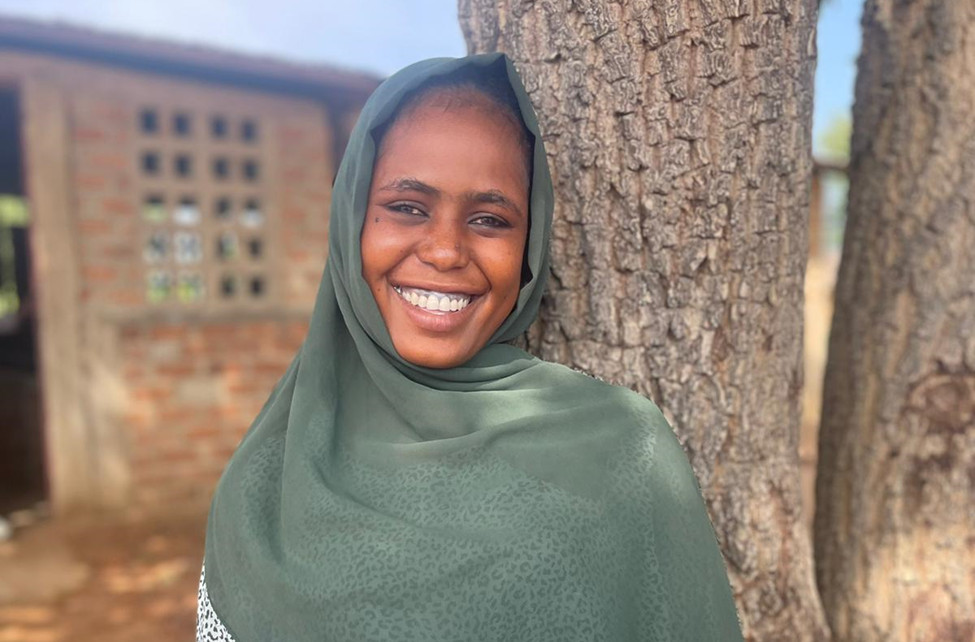
Aida, MHPSS Focal Point.
The MHPSS focal points provide peer-to-peer coaching, psychological first aid, and connect communities to specialized services, including therapy sessions, group activities, and recreation in Child Friendly Spaces. These safe spaces, open year-round, help children like Fatna, a ten-year-old participant, who has seen firsthand how these group activities bring relief: “Many children lost things. Some lost their parents or can’t find them. They feel sad and stay away. When we talk in circles or play together, we feel better and don’t feel as isolated.” Parents also benefit from psychosocial support at Safe Spaces, receiving counseling and other assistance. By addressing adults’ and children’s mental health, these focal points create a more supportive environment for everyone, building resilience and strengthening community ties.
Although Hali’s story in Niger and the youth-led MHPSS network in Birao unfold in different contexts, they reveal a common thread: inclusive education is essential for healing and progress in regions shaped by conflict and displacement. By training community members as teachers and focal points, UNHCR and its partners strengthen not only individual well-being but social cohesion, transforming schools into launchpads for resilience.
For many families across West and Central Africa, inclusive education is more than a policy—it’s a lifeline. Whether it involves sign language in a specialized school in Niamey or peer support in a settlement in Birao, these two stories illustrate how inclusive education can help children heal, grow, and shape brighter futures. Yet, with an estimated 61% of refugee children aged 6 to 17 out-of-school in West and Central Africa, there is an urgent need for sustained investments and collaborative efforts to build inclusive, equitable, and resilient education systems for all.





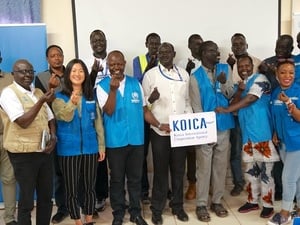
![To improve access to sustainable energy and increase agricultural production for both refugees and their host communities, UNHCR is working with the Zambian authorities to connect all three refugee settlements in the country to the national grid. UNHCR has also supported the construction of value-addition centres in the settlements, which provide refugee farmers with various services such as storage, processing, packaging, and refrigeration to improve productivity and increase access to local markets, including the mining industry.“We are currently getting fruits and vegetables from refugee [farmers],” said Priscilla, community relations officer at Golden Camp Solutions, a private catering company that serves employees of Lumwana copper mine. “We are looking at a ton of cabbage a week and about 500 kilograms of tomatoes. There is no difference between a refugee supplier and a regular supplier.” Zambia. Zambian farm communities reap the benefit of giving opportunities to refugees](/africa/sites/afr/files/styles/d03_traditional/public/RF1442455.jpg?h=10d202d3&itok=8wPBFW9q)
